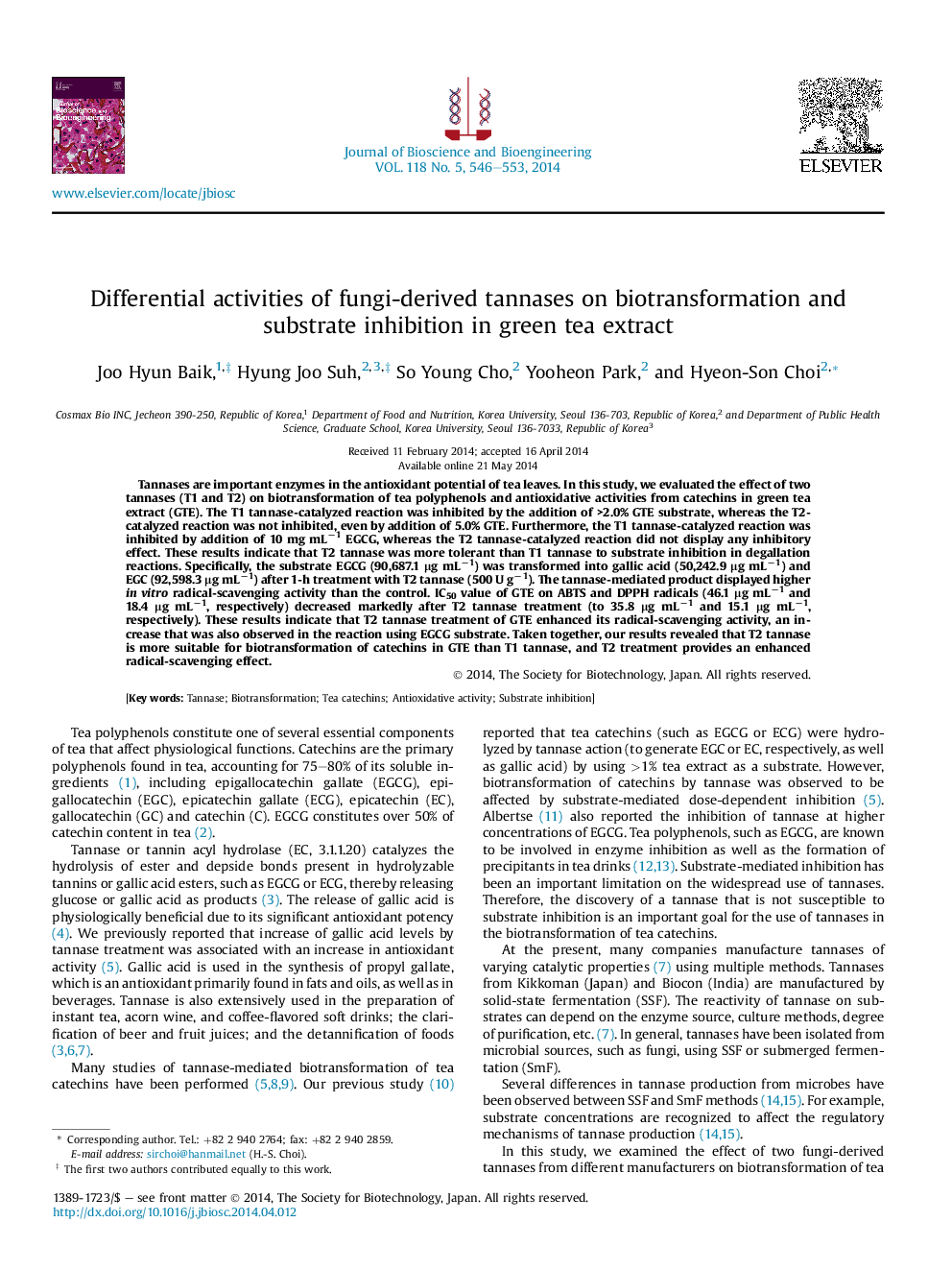| Article ID | Journal | Published Year | Pages | File Type |
|---|---|---|---|---|
| 20389 | Journal of Bioscience and Bioengineering | 2014 | 8 Pages |
Tannases are important enzymes in the antioxidant potential of tea leaves. In this study, we evaluated the effect of two tannases (T1 and T2) on biotransformation of tea polyphenols and antioxidative activities from catechins in green tea extract (GTE). The T1 tannase-catalyzed reaction was inhibited by the addition of >2.0% GTE substrate, whereas the T2-catalyzed reaction was not inhibited, even by addition of 5.0% GTE. Furthermore, the T1 tannase-catalyzed reaction was inhibited by addition of 10 mg mL−1 EGCG, whereas the T2 tannase-catalyzed reaction did not display any inhibitory effect. These results indicate that T2 tannase was more tolerant than T1 tannase to substrate inhibition in degallation reactions. Specifically, the substrate EGCG (90,687.1 μg mL−1) was transformed into gallic acid (50,242.9 μg mL−1) and EGC (92,598.3 μg mL−1) after 1-h treatment with T2 tannase (500 U g−1). The tannase-mediated product displayed higher in vitro radical-scavenging activity than the control. IC50 value of GTE on ABTS and DPPH radicals (46.1 μg mL−1 and 18.4 μg mL−1, respectively) decreased markedly after T2 tannase treatment (to 35.8 μg mL−1 and 15.1 μg mL−1, respectively). These results indicate that T2 tannase treatment of GTE enhanced its radical-scavenging activity, an increase that was also observed in the reaction using EGCG substrate. Taken together, our results revealed that T2 tannase is more suitable for biotransformation of catechins in GTE than T1 tannase, and T2 treatment provides an enhanced radical-scavenging effect.
